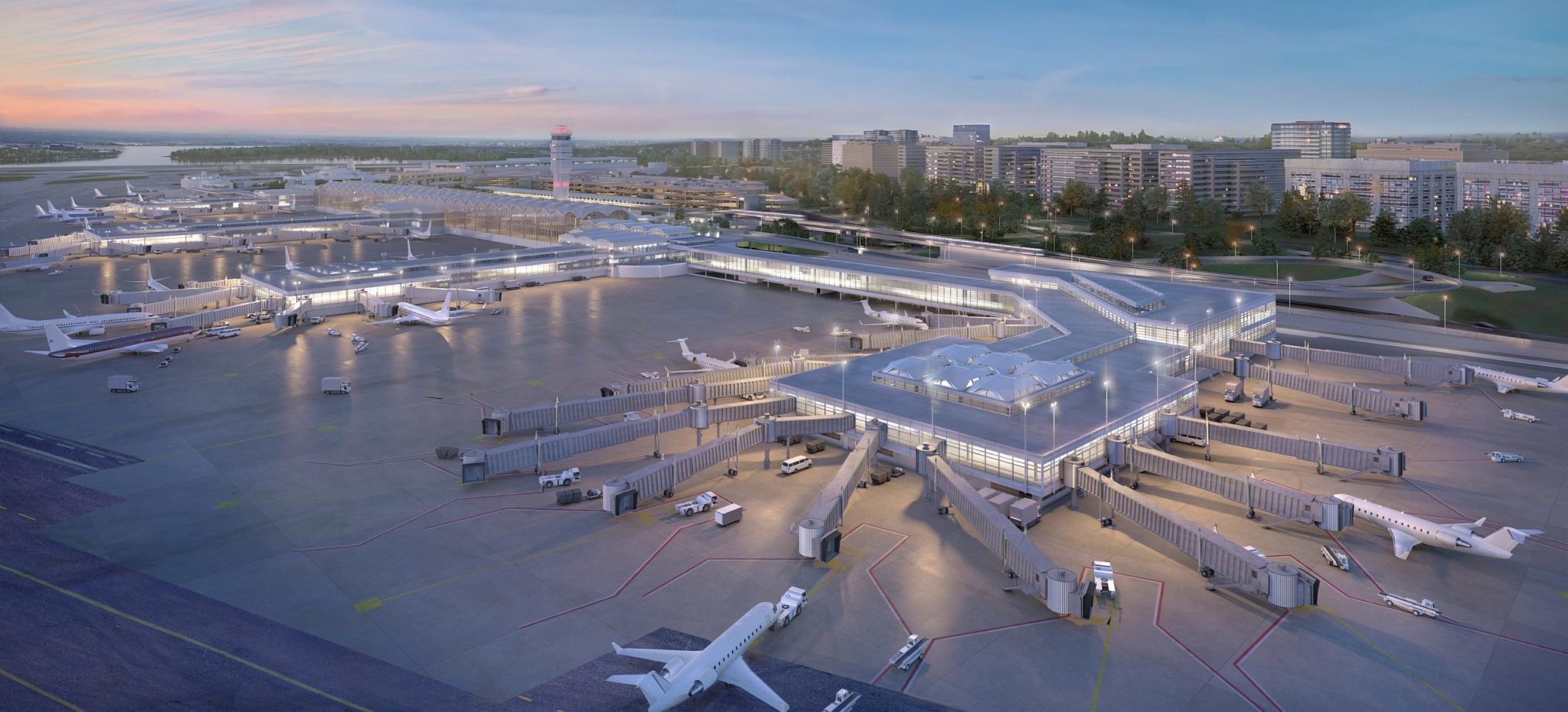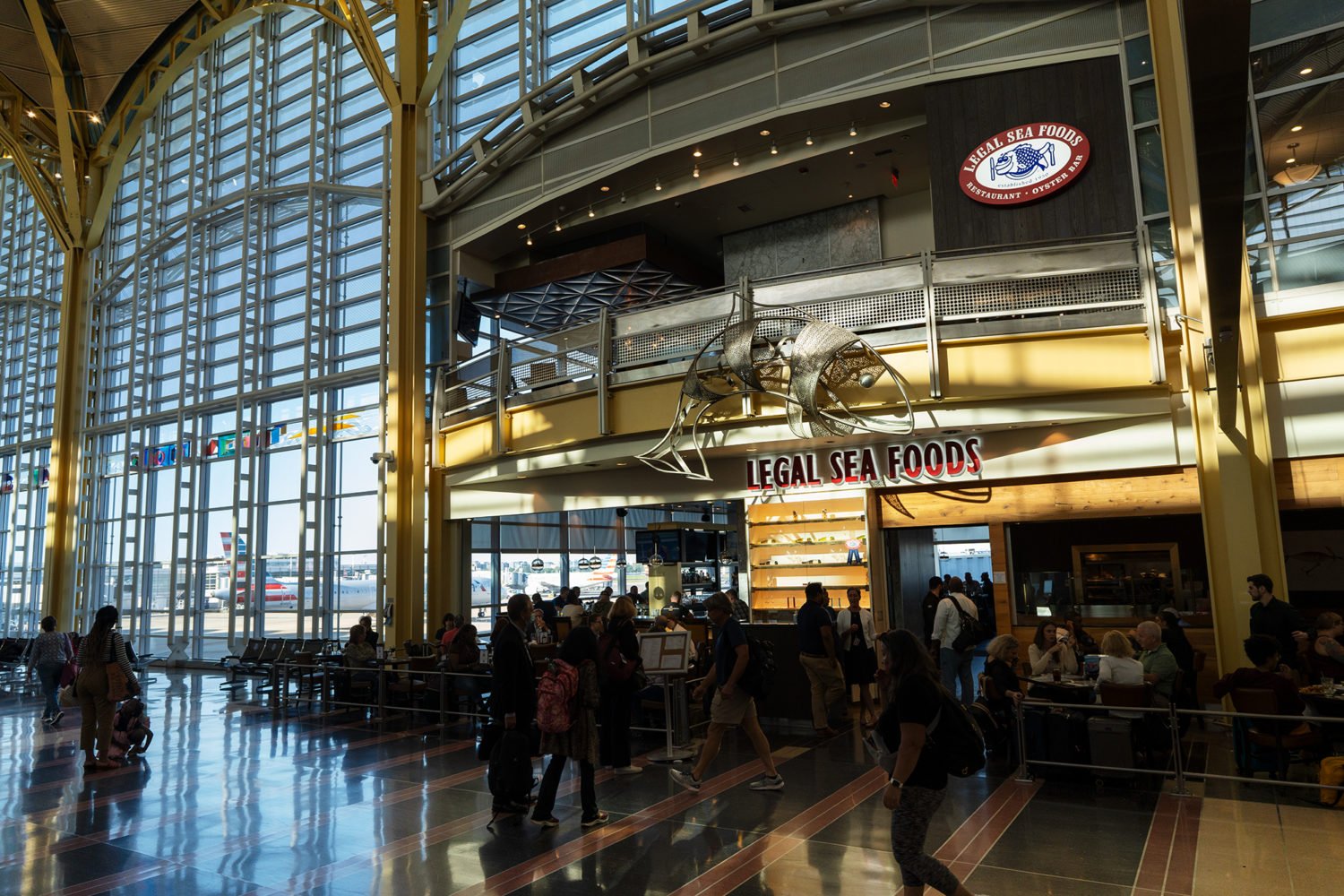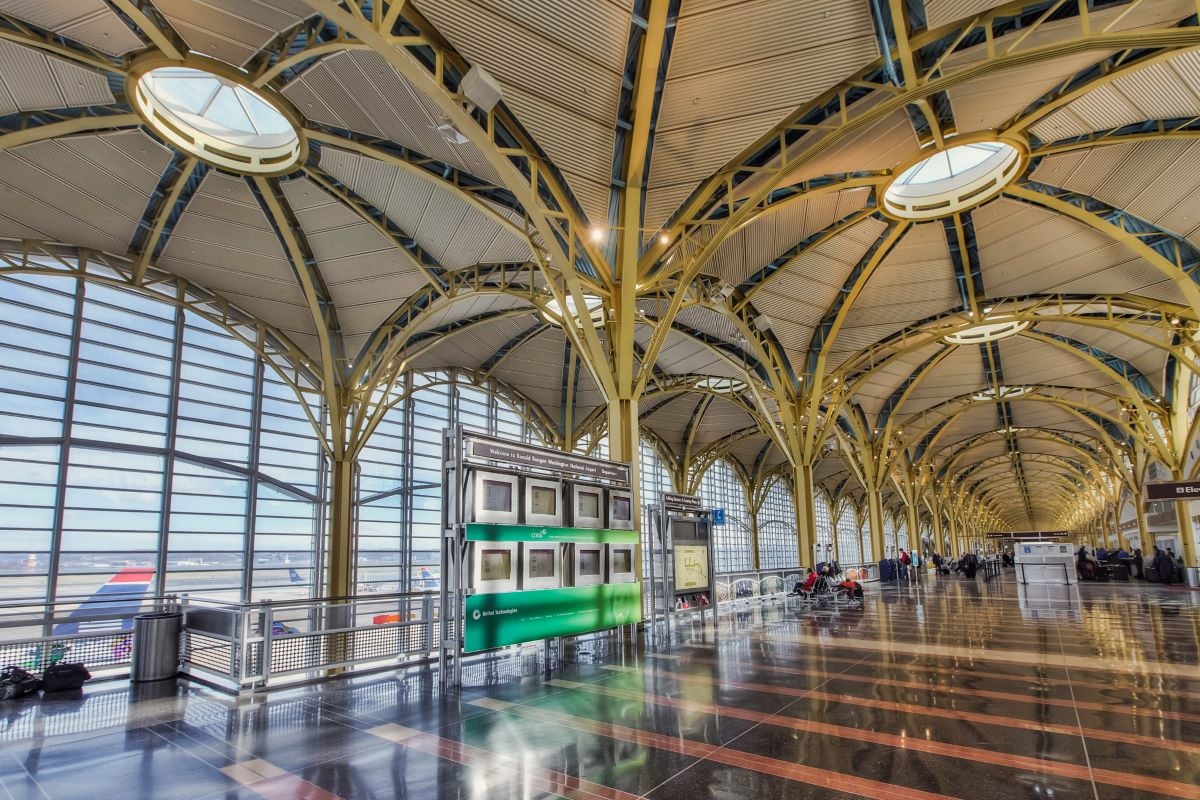Gate 35X: Just the mention of this infamously congested departure lounge at Reagan National Airport evokes dread and despair in the minds of commuter-flight travelers. A journey through the boarding area begins with an escalator ride down to what’s typically a standing-room-only waiting area, before an outdoor walk on the tarmac to a shuttle bus. Finally, another stroll through the elements and up the stairs to the airplane completes the first aggravating leg of your trip—and the plane hasn’t even taken off yet.
But soon 35X will be gone. Reagan National is building a new $374-million terminal that will be home to much of the airport’s regional-airline traffic. When it opens in 2021, it will offer 14 gleaming gates, all with passenger bridges to the planes—no more rain-soaked runs to and from the shuttle bus. Shopping and food will also be much closer to the gates, rectifying a major annoyance of the current setup.
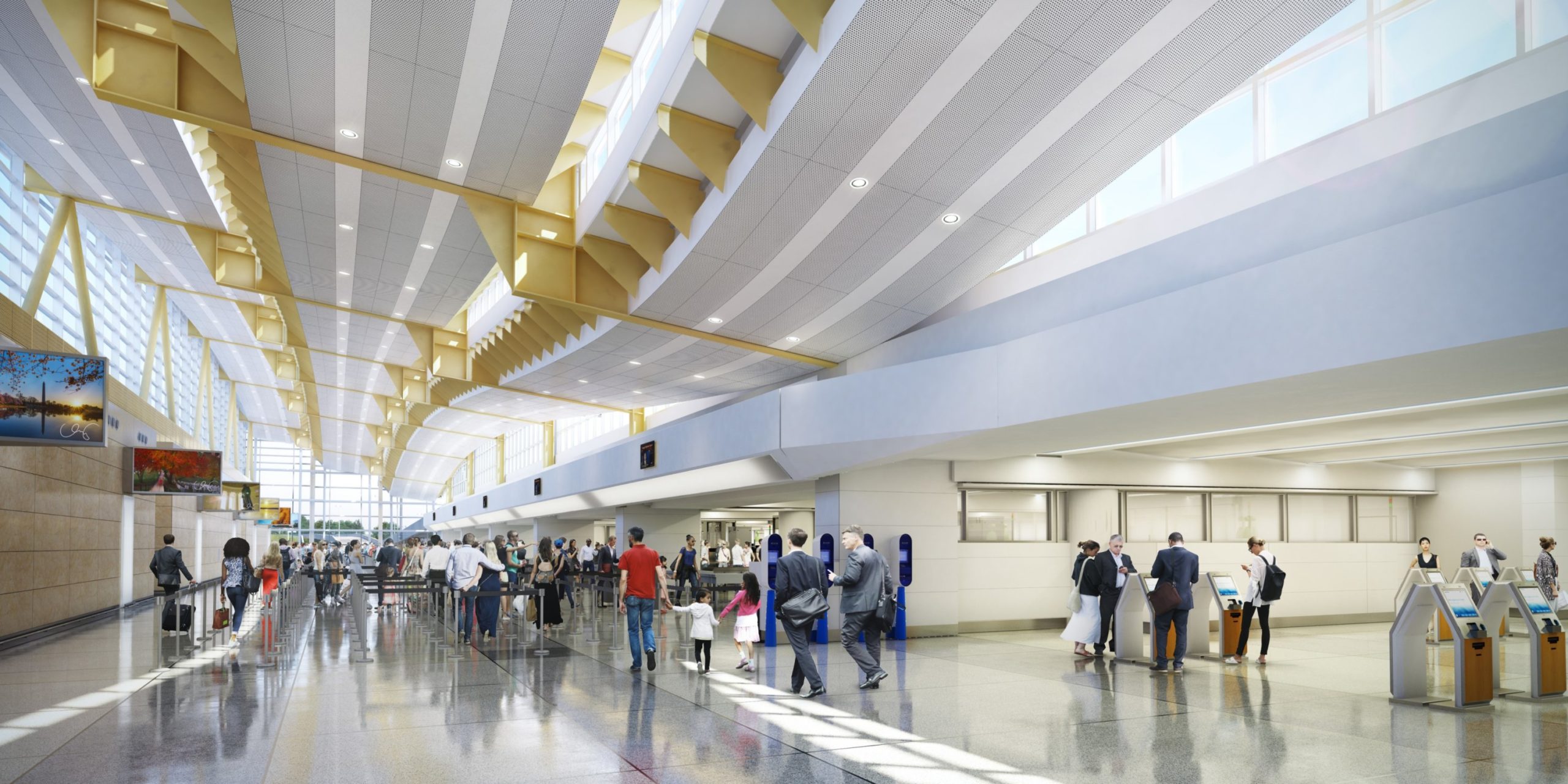
In other words, the design—a joint venture of the engineering firm AECOM and the architecture firm PGAL—promises to be a substantial upgrade. Characterized by lots of daylight and open space, it features flat ceilings that vary in height to allow for clerestory windows. Expanses of glass at the entrance hallway and circulation areas provide views to the aircraft apron and beyond. Familiar elements from the current terminal appear in the new design: Yellow-painted steel columns and tree-branch-like struts support Jeffersonian domes.
The goals of the new concourse—to provide a relaxing and stress-free environment, clear organization, and passenger comfort—fit with trends in airport design. As with all excellent architecture, well-designed airports are sensitive and responsive to their specific location and context, and they function efficiently while minimizing walking distances.
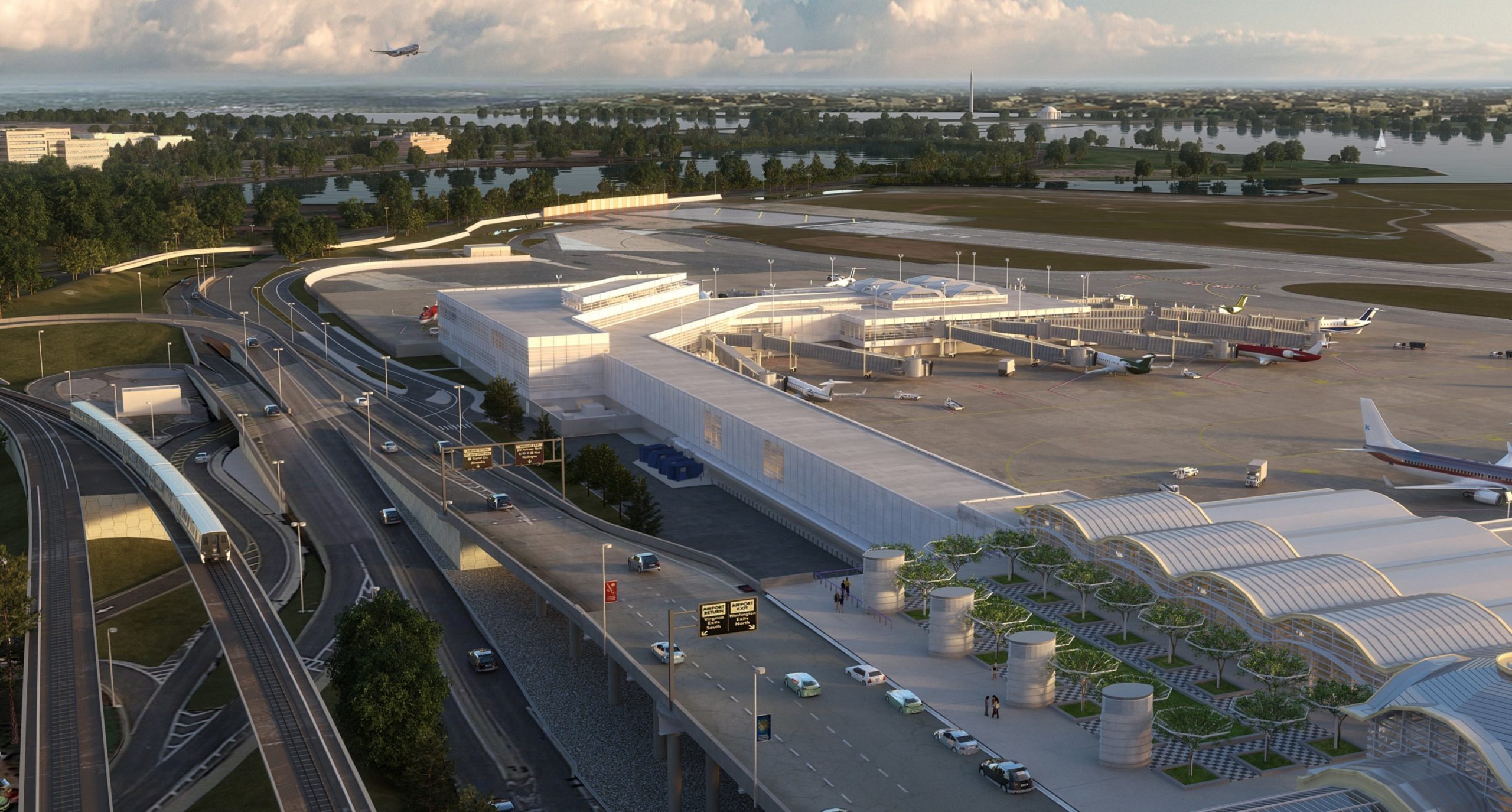
But the world’s great airports do more: They transcend practical requirements to contribute to the anticipation and excitement of the journey ahead while, for arriving passengers, they act as inviting gateways to their cities. The airport is the first thing you see when you reach your destination. Shouldn’t considerable thought go into what that aesthetic experience is like?
That’s certainly the case with Dulles International Airport, the soaring modernist landmark in Northern Virginia that was designed by Eero Saarinen and opened in 1962. Back then, air travel was considered a special, almost romantic event. People dressed up, and there was a shared excitement about freedom, possibility, what might be over the horizon.
The new terminal will look more like the lobby of a hotel than the audacious statement it could have been.
Today we fly under duress, negotiating crowds, security lines, and the numbing boredom of routine. Airport terminals, once impressive cathedrals to aviation, have become generic linear concourses with a depressing sameness.
But lately, designers have been pushing back against that function-over-form approach. Some of the great global hubs—such as airports in Singapore, Hong Kong, and Beijing—feel more like urban destinations than places merely to pass through. In the US, New York’s Elmira Corning Regional Airport has a central outdoor garden court integrated into the architecture.
On the outside, these structures make use of bold, geometric forms inspired by the natural or built surroundings. Inside, designers are employing state-of-the-art features such as calming indoor plant landscapes. For example, Jewel Changi Airport in Singapore, designed by Safdie Architects, contains a forest and waterfall that mimic the lush environment for which the country is known.
There won’t be anything like that at Reagan National’s new concourse, unfortunately—it’s a far more conventional space inside and out. While the design is sleek, well planned, and beautifully detailed, it’s essentially an aesthetically watered-down extension of the elegant B/C Terminal, which opened in 1997. (The original 1941 A Terminal also has a certain charm and historical importance.) When it’s done, the new terminal will look more like the lobby of a large hotel than the audacious architectural statement it could have been.
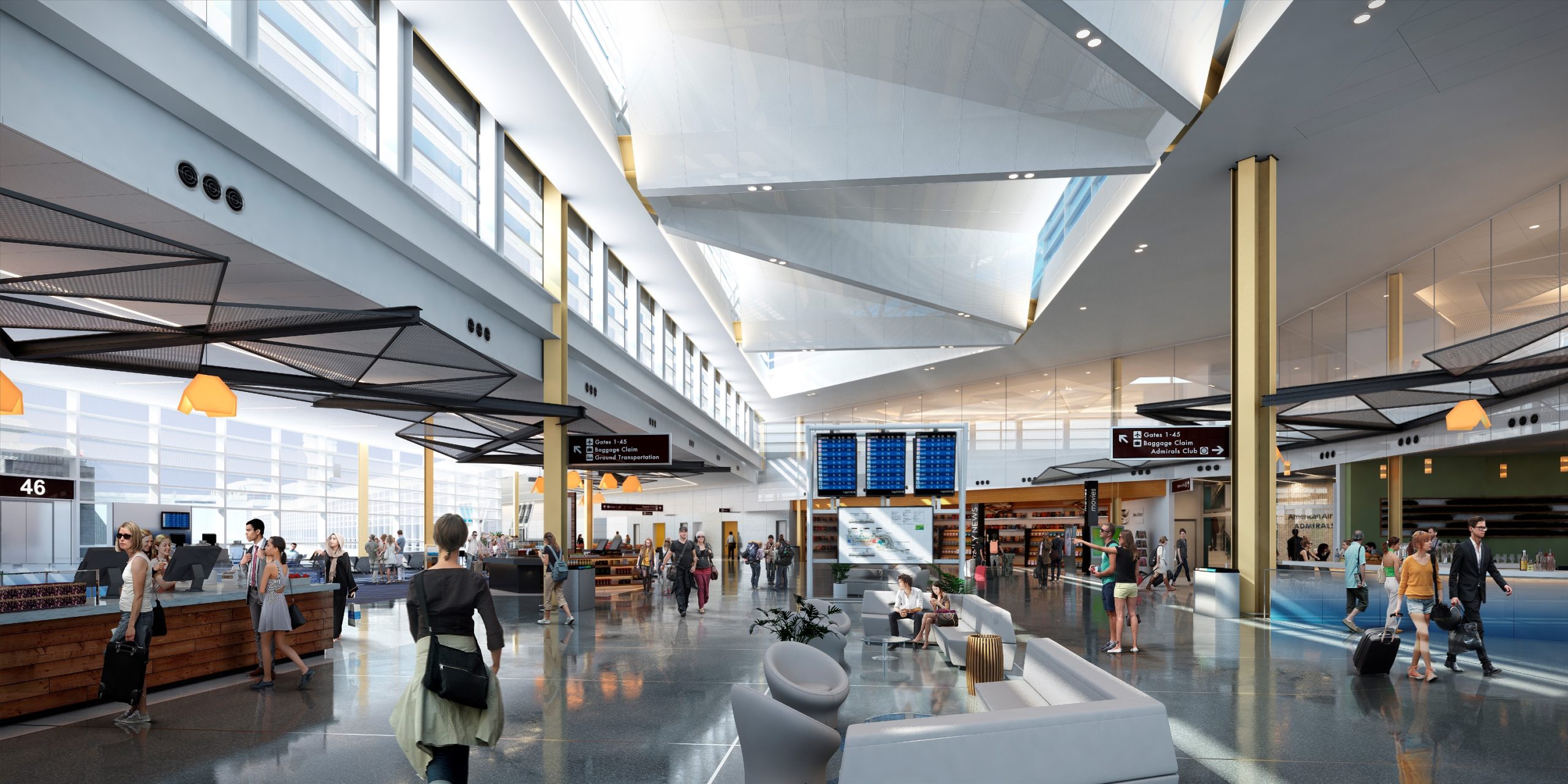
It’s not hard to imagine a different visual experience. What if, instead of the considered but generic building in the works, the new terminal offered a more direct link to the area it will serve? Planes that land at Reagan pass right by DC’s landmarks on their descent—among the most striking views you can get from a window seat. As a result, the architecture of the nation’s capital becomes an integral part of air travel into and out of the city. A more inventive design might celebrate the famous structures nearby and have its own distinctive identity as a regional-transportation hub.
So while the upgrade is welcome, it still seems—as the renderings suggest, at least—like it’s missing something. The practical improvements will be significant. But for anyone who cares as much about how buildings feel as about how they work, the lack of a dramatic vision is disappointing. There will be many places in the new terminal to recharge your computer. If only there were some to nourish your soul.
This article appears in the January 2020 issue of Washingtonian.

